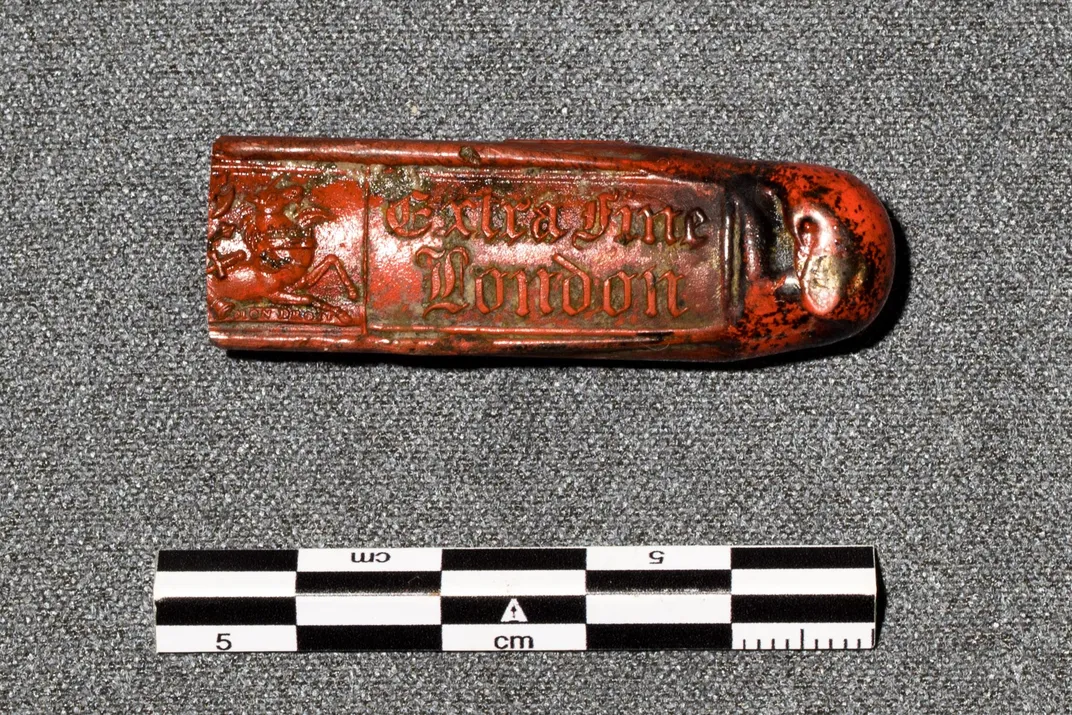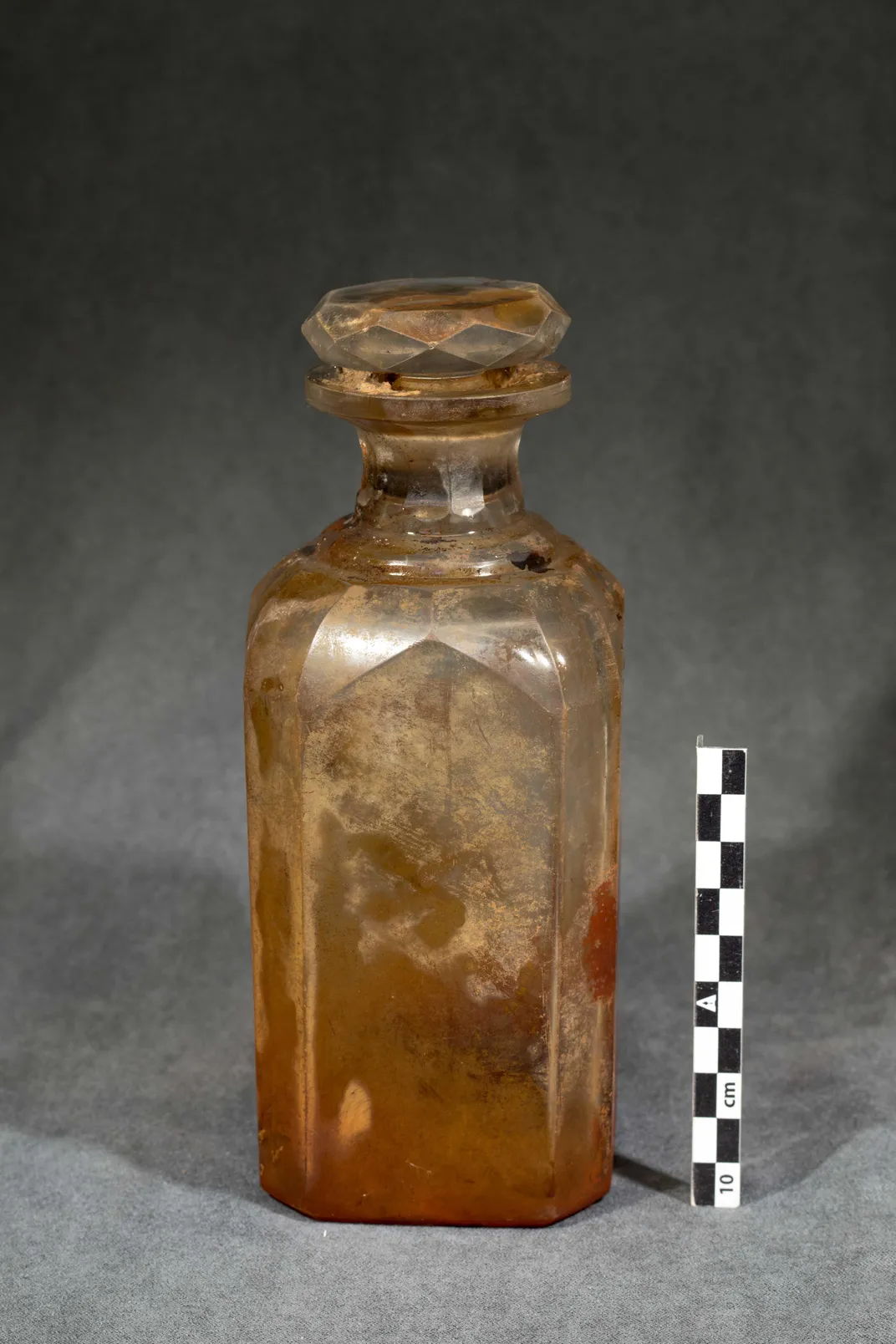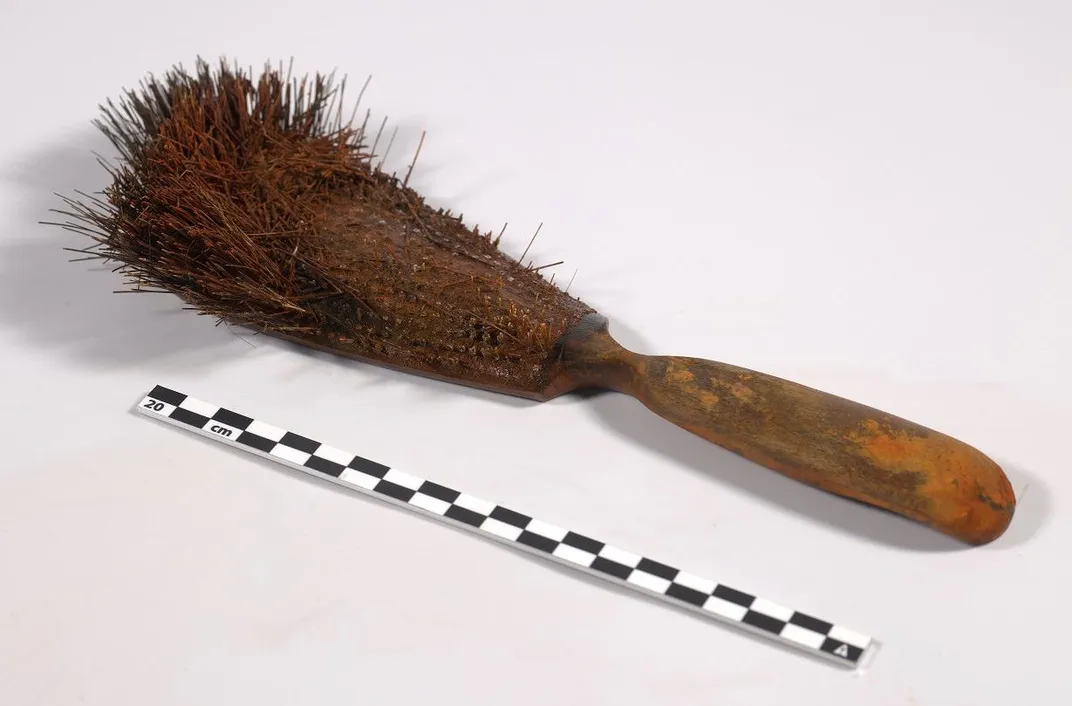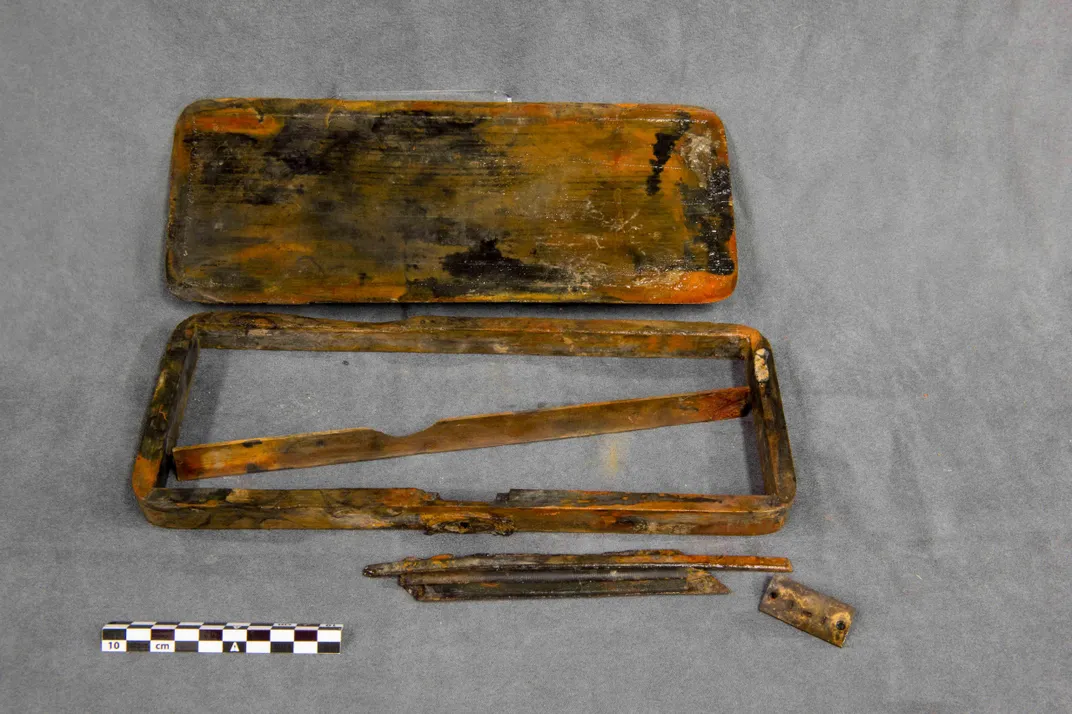Divers Recover More Than 350 Artifacts From the HMS ‘Erebus’ Shipwreck
The treasure trove could help answer questions about what happened during the disastrous Franklin Expedition
/https://tf-cmsv2-smithsonianmag-media.s3.amazonaws.com/filer/d8/a3/d8a3908b-41eb-4d32-85a8-e3d2aa7e1ad1/hms_erebus_1.jpg)
Braving water temperatures that dipped below freezing, divers spent nearly four weeks off the coast of Nunavut in northern Canada last summer exploring the HMS Erebus. The ship sank during the doomed Franklin Expedition of the 1840s, when British naval captain Sir John Franklin and his crew searched for the Northwest Passage.
This week, the team unveiled more than 350 artifacts they recovered from just a small area of the wreck. Among the objects brought to the surface were kitchen wares, wine bottles, a wax seal with a fingerprint, and a hairbrush with hair strands that could contain clues about the fate of Arctic explorer John Franklin and his crew.
"We have had the most successful season since the discovery of the wreck," Marc-André Bernier, manager of Parks Canada's underwater archeology team, told reporters in a press conference Friday. "The preservation of the objects is quite phenomenal."
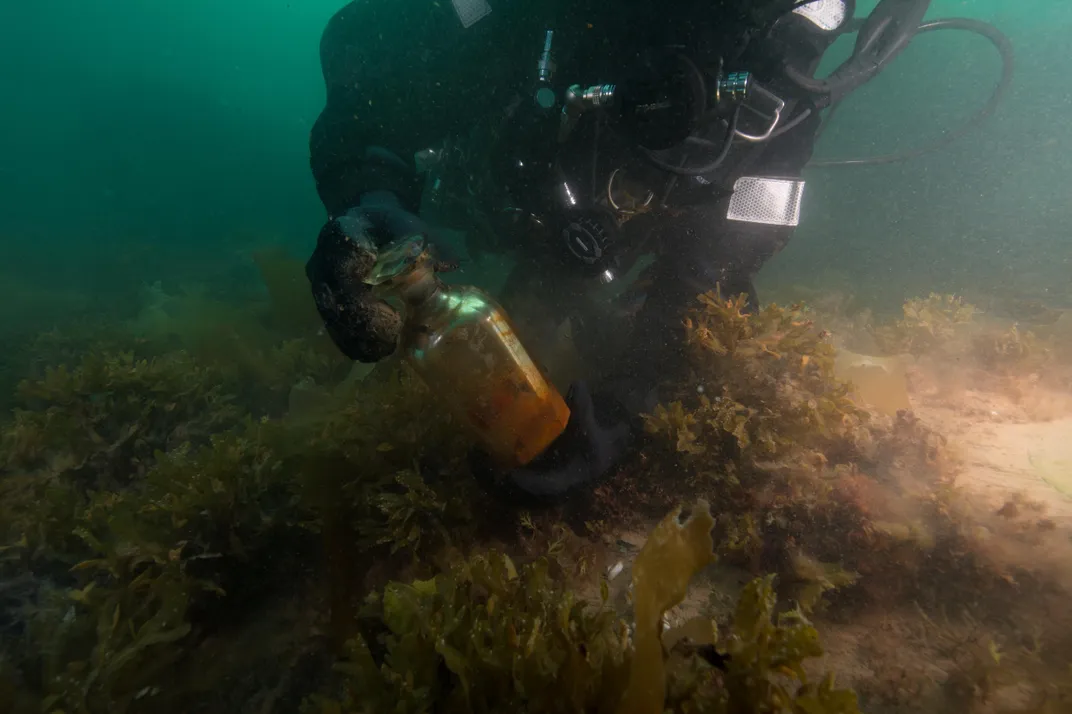
The final days of the Franklin Expedition have been shrouded in mystery for nearly two centuries. In May 1845, Franklin and his 128 crew members set sail on HMS Erebus and HMS Terror from England on a quest to find the sea route from the Atlantic Ocean to the Pacific through the Arctic Ocean. A year and a half later, their ships became trapped in ice near King William Island. By 1848, Franklin was dead and the surviving men abandoned their still-trapped ships. These scant details were gleaned from a note the crew left in a cairn.
None of the men were ever found alive, and the expedition is considered one of the worst disasters in the history of polar exploration. The loss of the crew was sensational news in the mid-19th century. Over the decades that followed, search parties and sleuths discovered deserted campsites, graves and artifacts in the region that hinted at the misery and desperation of the crew as they dispersed and tried to find safety. Parks Canada and its Inuit partners identified the wrecks Erebus and Terror, in 2014 and 2016, respectively, marking a major turning point in the cold case.
Forbidding Arctic conditions mean that the wrecks are totally inaccessible for all but five to six weeks out of the year. The Parks Canada team has been stymied by bad weather in the past during this short window of study. But over nearly four weeks in late August and September, the crew had exceptionally clear conditions and they were able to spend a total of 110 diver hours at the Erebus site, Bernier said.
The team set up a special platform directly over the wreck, so that instead of scuba, they could use another technique called surface supply diving that allowed divers to get an unlimited air supply through an umbilical cord-like hose. They also had special hoses that fed warm water to the divers' suits, as sea water temperatures could drop to 28 degrees. This combination greatly increased the efficiency of the dives, and some divers were even able to stay underwater for up to 3 hours without coming up, Bernier told reporters. (In the past, divers could typically stay down at the icy wreck for only 40 minutes at a time.)
Before last year's campaign, just over 50 artifacts total had been recovered from Erebus, as previous seasons were mostly devoted to assessing the delicate wreck.
"When you find a shipwreck, you have to really understand what you're faced with before you really start doing some intrusive work on the site," Bernier said.
The 2019 field season yielded such a huge haul of objects in comparison because it marked the first time the researchers could conduct a systematic excavation of the site. Erebus sits in about 30 feet of water in Wilmot and Crampton Bay. In this relatively shallow resting place, storms and surface waves have smashed up parts of the ship, and recovering objects from the sediment isn't always so straightforward. The archaeological team focused on an area that would have been the lower-ranking officers' cabins and storage areas. After moving some timbers and pieces of the hull, they targeted an undisturbed, sediment-covered area about one meter wide and five meters long. From this relatively small cross section, they found a smattering of objects that attest to daily life aboard the ship.
From a pantry area, they discovered plates stacked sometimes 13 high, large serving dishes, plate warmers, strainers and even an accordion. They also found a "perfectly intact" toothbrush, Bernier said, and items of clothing, such as a wool mitten, the leather sleeve of a coat and a shoe. They also meticulously recovered 12 strands of hair from the bristles of a wooden hairbrush, in the hopes these hairs could be analyzed for DNA, or perhaps for other information, like markers of stress and diet. Bernier said one of the most interesting finds was a small lead stamp bearing the name "Ed Hoar," who was actually the steward of the ship's captain. And in a drawer that was otherwise filled with sediment, they found a deteriorated tin box containing epaulettes from a lieutenant's uniform.
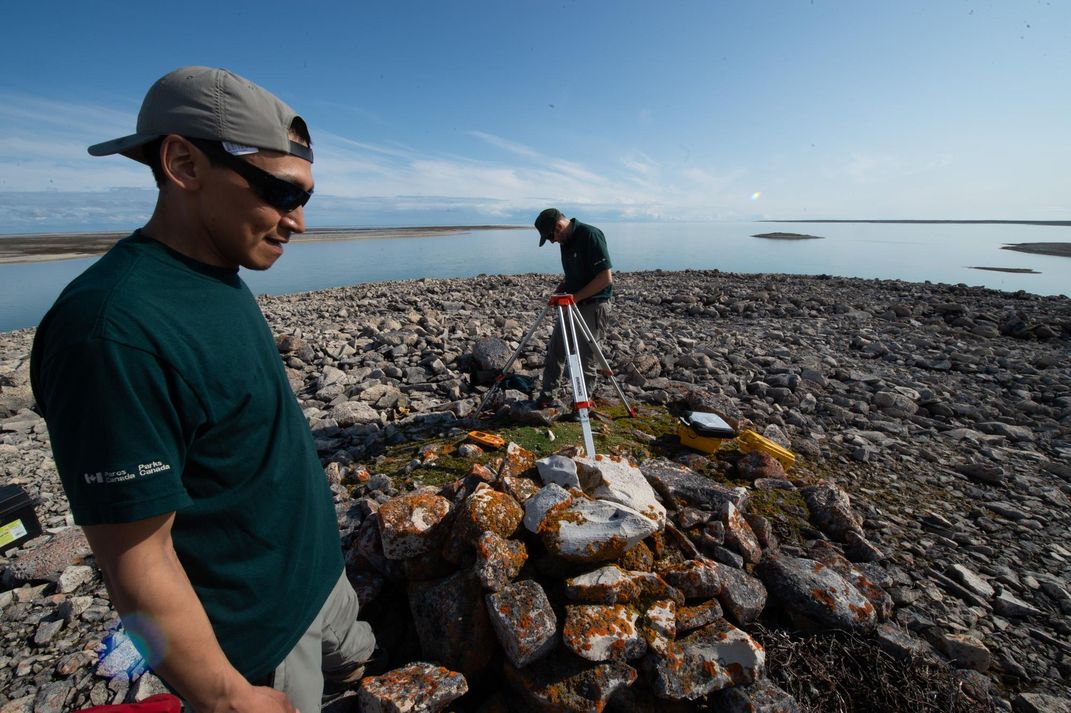
The divers also had a successful campaign at the Terror site in early August last year. Thanks to the clear conditions, the team was able to see that the propeller of Terror was down as if it sank while in operation, contradicting long-held assumptions that the ships never sailed again after getting trapped in ice. Divers were also able get a first look inside the ship with the help of an underwater remotely operated vehicle (ROV) that could be piloted through the eerie cabins and living spaces below deck.
Sitting 80 feet below the surface, Terror is much more intact than Erebus. Unbroken blue and white china was still on shelves near the mess table. Glass bottles were sitting upright in storage rooms. Though divers could not yet enter the ship due to safety concerns, the video footage from the ROV allowed them to identify some tantalizing targets for future exploration, including the desk of Francis Crozier, Franklin's second-in-command and Terror's captain. The closed drawers on Crozier's desk could very well be empty, but if they contain sketches, journals or daguerreotypes, those documents are likely to be well-preserved. The same frigid conditions that make exploring the Arctic so challenging also keep delicate artifacts looking brand new centuries later.
The team hopes that with further exploration of the ships, they'll be able to answer questions about how the ships sank, why they ended up about 45 miles apart and who was on the ships when they were ultimately abandoned.

